
views
Finding a Buyer
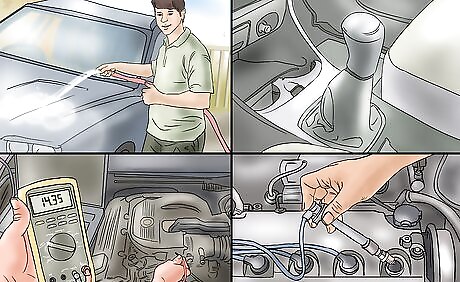
Prepare the car for sale. If you want to maximize your ability to sell your car, you need to make it as desirable as possible. Clean it inside and out, vacuum it, polish and fix minor flaws. As part of your preparations, have the car inspected by a mechanic and make any repairs that it needs. You should organize your maintenance records and have them available for potential buyers.

Write an effective advertisement. You need to describe the car, fully and honestly. You don’t need to mention every dent and ding, but you should describe the car in honest terms. After all, any serious buyer is going to see the car eventually anyway, and they will appreciate your honesty. Play up the car’s strengths in your ad. If you believe it has strong pickup, a big trunk, or anything else that buyers might want, say so. Include plenty of photographs. Clear photographs of the car will draw buyers’ attention. Include the basic details. Identify the make, model, year, mileage, color, and any special additions that the car may have. Define the terms of the sale - the asking price and whatever forms of payment you will accept.
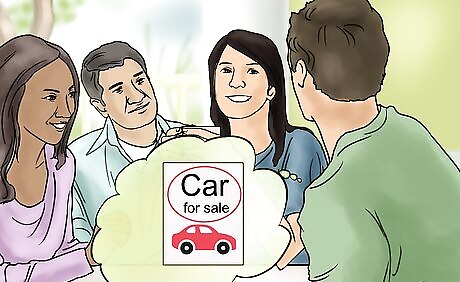
Distribute the ad widely. There are several forms of effective advertising. To create the best chance of selling your car for a good price, you should make use of several different forms of advertising: Spread the word among your friends and colleagues. Post fliers in public places that show positive photographs of your car. Post your advertisement online at sources like Craigslist or Facebook Marketplace. Use online car selling sites like autotrader.com and cars.com. Focus on local advertising. The Oregonian newspaper has an online classifieds page, where you can post your ad. You can also post in The Nickel, a publication that serves northern Oregon and southern Washington. Call your own local newspaper as well. Put a sign in the car’s windows and drive it around town. You may also find some public place to park it and display the window sign. If you do, make sure that you have the permission to park where you put it.
Negotiating a Sale
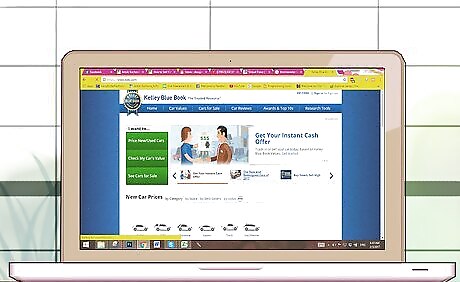
Know the car’s value. Use a source like the Kelley Blue Book to get an estimate of your car’s value. The Kelley Blue Book has an online site at KBB.com. You enter your car’s make, model, year and condition, and you will receive a range for its value. Many people form emotional attachments to their cars. This may lead to an overestimation of the value. To avoid this, get an unbiased opinion from your mechanic about its condition.
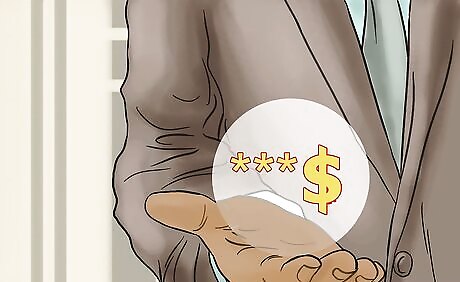
Set your asking price. The Blue Book will give you a starting range, but you need to refine it. If you have kept up on the regular maintenance of the car or if your car is still under warranty, you may be able to set a price at the top of the range. If you are aware of flaws, then perhaps you should stick to the bottom of the range. In either case, when you are setting your asking price, you should leave a cushion of approximately 10% to account for negotiating. As an example, if you really want to collect $4,000 for the car, you should begin with an asking price of about $4,400-$4,500.

Meet with prospective buyers. When someone responds to your advertisements, you will first want to verify that they are genuinely interested. Remind them of the price and the form of payments (certified check or money order, for example). It is a good idea not to accept payments over time, as this may be a sign of fraud. It is common for buyers to expect to test drive the car and even have it examined by a mechanic. You should plan to accompany the driver on the test drive and use the opportunity to talk about the car and try to make your sale.
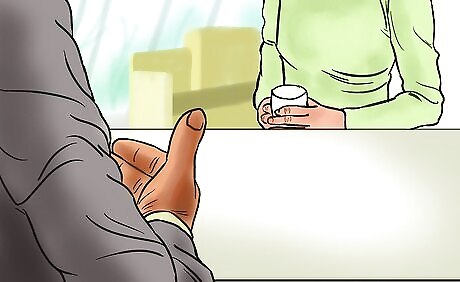
Negotiate to get your price. Although you may have accounted for some negotiating and the ability to lower your asking price, you should also have in mind a true bottom price. If the buyer is not willing to meet at least that, then you should be willing to walk away from the deal.
Finalizing the Sale

Get the certificate of title. In order to sell your car, you need the original title document. If you cannot find it or do not have it, you will need to get it from one of several sources. If you still owe money on the car, then the lender will have the title. You can only sell the car by first paying off your loan, and then you will get the title from your lender. The lender will complete a Statement of Lien Satisfaction. If you know that you had the title, but now you cannot find it, you will need to order a duplicate from the Oregon DMV. Complete the form and submit it to the DMV with a fee of $77 for most vehicles. If you need help or have questions, call (503) 945-5000. In Portland, call (503) 299-9999.
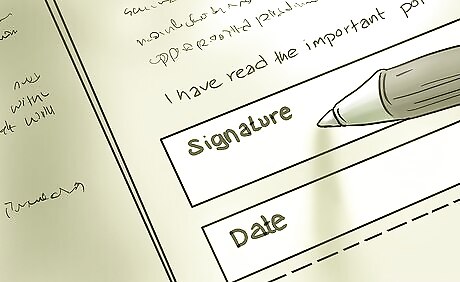
Sign the title as the seller. Everyone whose name appears on the front of the title as the owner must sign the title on the back as the seller. There is a space on the back of the title for the signatures of the sellers. If one or more of the owners listed on the front of the title is not available, you must resolve that conflict before you can sell the car. If an owner has died, you will need to get a new title as a transfer through a will. If the original ownership has changed, the title must be revised to match. Any changes to the names on the title must be treated as a “sale” and must be registered with the DMV.
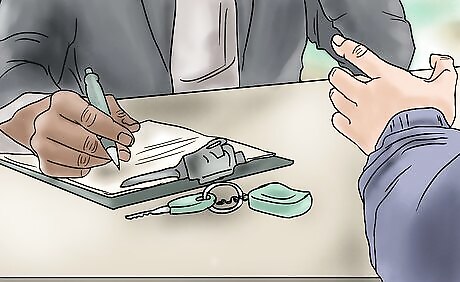
Fill in the buyer's information in back of the title and have the buyer sign it.
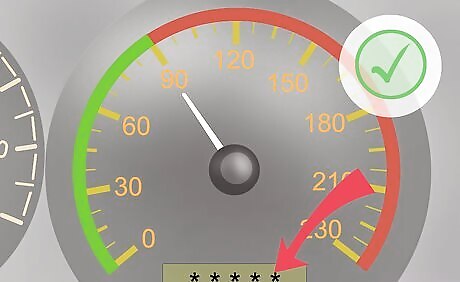
Record the car’s odometer reading on the title. This is a requirement for most sales, and your signature verifies that the odometer reading is original. Odometer readings are not required for the sale of vehicles that do not have an odometer, that are over ten years old, that are not self-propelled (trailers or campers), or that weigh over 16,000 pounds. Odometer readings are not required for the sale of snowmobiles either. Additionally, if one of the sellers is going to remain on the title after the sale, the odometer reading is not required.
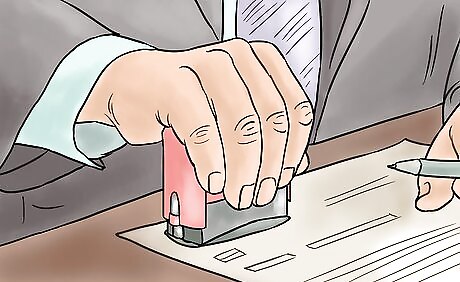
Complete a bill of sale. A bill of sale is not required in Oregon to make a legal transfer of the car, but it is a good idea. It's a good idea to also check the buyer's identity and fill in their information completely on the bill of sale, as well as the back of the title. Keep a copy of completed bill of sale for yourself. A bill of sale identifies the car by year, make, model and vehicle identification number (VIN), and information on both the buyer and the seller. The bill of sale has spaces for both the “Date of Purchase” and the “Date of Release.” These dates are the same. From the buyer’s point of view, the vehicle is being purchased. From the seller’s point of view, ownership is being “released.” Just repeat the same date. It is a good idea to write the exact time as well so that if he gets into an accident shortly after driving off, his victim wouldn't try to make a claim on your policy. Both the buyer and the seller should keep a copy of the bill of sale. This serves to formalize the deal.
Notify your insurance company of the sale immediately to cancel your policy on the vehicle. It's the buyer's responsibility to have insurance. If he doesn't have insurance and gets into an accident before you cancel your policy, a claim may get made against your policy. keeping a copy of bill of sale and prompt notification is essential in identifying when the transfer occurred.
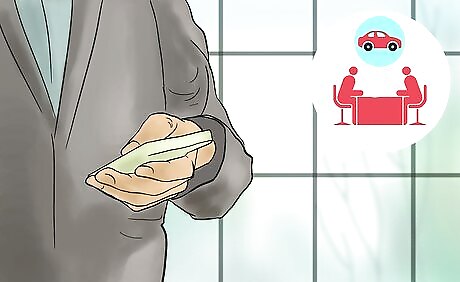
Notify the DMV of the sale. Once the vehicle has been sold, the seller must notify the DMV of the sale within ten days. Option 1:complete it online https://dmv2u.oregon.gov/eServices/?link=sale Option 2:Notice of Sale or Transfer of a Vehicle (Form 735-6890). You need to provide this notice so the DMV will know that you are no longer responsible for the vehicle or anything that happens to it.Sell Your Car in Oregon Step 13 Version 2.jpg The buyer will be responsible for his own registration and insurance on the vehicle. This is not up to you as part of the sale. The buyer will complete an Application for Title and Registration form (Form 735-226), which is available from the Oregon DOT at https://www.oregon.gov/odot/forms/dmv/226fill.pdf. The buyer must submit this form within 30 days after the sale. Some buyers operate as unlicensed dealers, called "curbstoners". Don't let your buyer be a phantom buyer that stays off the book. If the "middle man" gets tickets or gets into incidents prior to flipping it to someone else that eventually register the car, any inquiries regarding anything that the vehicle was involved before it has been formally registered will come to you. Therefore, it's essential that you obtain accurate information on the person whom you hand the key over to and maintain it for a reasonable length of time so you can provide their information if you receive inquiries or the vehicle is involved in a crime. To avoid complications, it's strongly recommended that you avoid making the sale out to the person's relative or a friend that is not present.
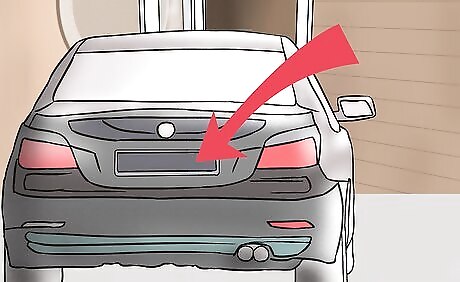
Leave the existing plates on the car and it will transfer to the new owner with the car. This is how it is usually done with ordinary, randomly assigned plates. Just include the plate number on the form. However, you may remove the plates at the time of sale if you wish.. When you complete the sale form, you notify the DMV that you sold the vehicle, but your name will remain on the title in their system until the new owner goes out on their own to the DMV. You will continue to hear about it and have to refute any violations in which the vehicle is involved in until the transfer is done, which will not happen if the new owner chooses not to do so. This can be especially troublesome if there is plenty of time left on the existing plates as there's no real incentive for them to do so. If you choose to sell your car without plates, you can either destroy them by bending or cutting them so they are no longer usable or turn them in to the DMV at 1905 Lana Ave. NE, Salem, Oregon 97314. You can also return them at any DMV office.

















Comments
0 comment